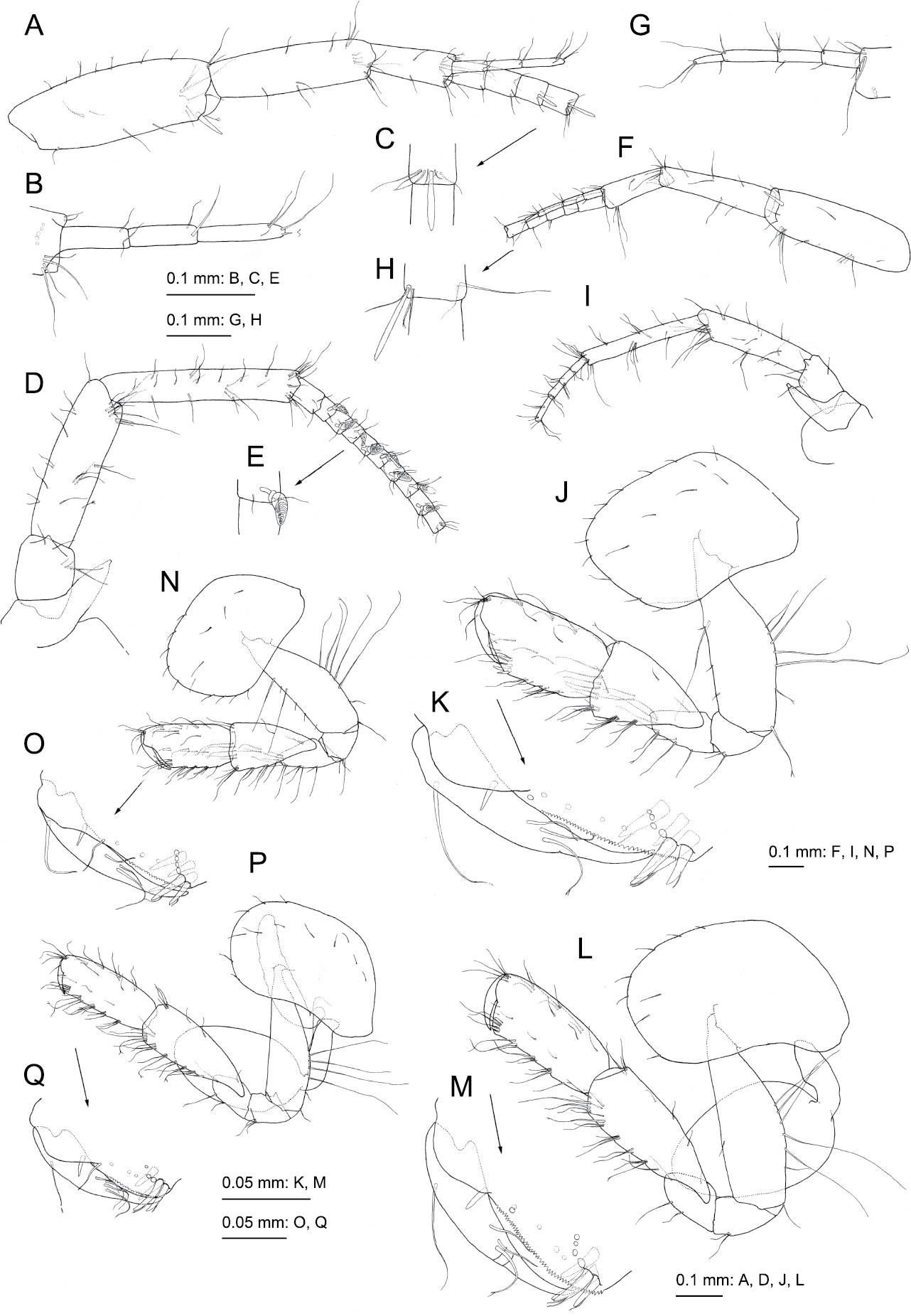
|
||
|
Eoniphargus toriii sp. nov., male holotype (NSMT-Cr 16652), female paratype (NSMT-Cr 16653) A antenna 1, medial view B accessory flagellum of antenna 1, medial view C aesthetasc on flagellar article of antenna 1, medial view D antenna 2 (some flagellar articles are omitted), medial view E calceolus on flagellar article of antenna 2, medial view F antenna 1 (female, some flagellar articles are omitted), medial view G accessory flagellum of antenna 1 (female), medial view H aesthetasc on flagellar article of antenna 1 (female), medial view I antenna 2 (female, some flagellar articles are omitted), medial view J gnathopod 1, lateral view K palmar margin and dactylus of gnathopod 1 (some setae are omitted), lateral view L gnathopod 2, lateral view M palmar margin and dactylus of gnathopod 2 (some setae are omitted), lateral view N gnathopod 1 (female), lateral view O palmar margin and dactylus of gnathopod 1 (female), lateral view P gnathopod 2 (female), lateral view Q palmar margin and dactylus of gnathopod 2 (female, some setae are omitted), lateral view F–H, N–Q female; others, male. Modified from Tomikawa et al. (2007). |